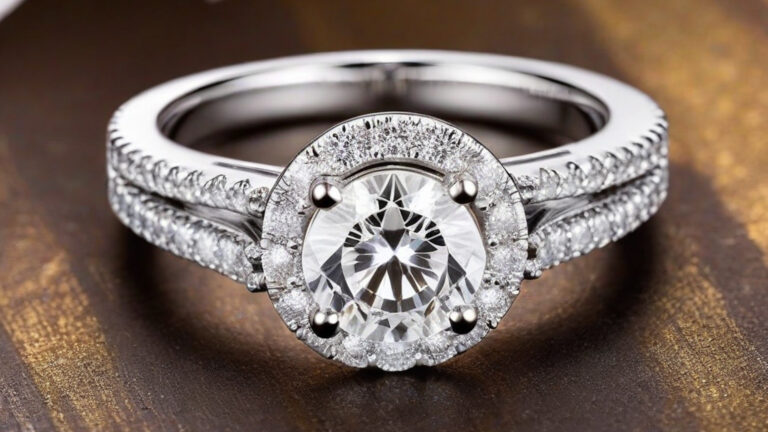No products in the cart.
Choosing an engagement ring is a deeply personal and significant decision, and the design style plays a key role in capturing the essence of your love story. Engagement ring design styles encompass a wide range of aesthetics, from timeless classics to modern and avant-garde designs. Let’s explore the details of various engagement ring design styles to help you find the perfect expression of your commitment:
- Classic Solitaire:
- The epitome of elegance, the classic solitaire features a single, dazzling center diamond set on a simple band.
- This timeless design highlights the beauty of the diamond, creating a sophisticated and understated look.
- Halo Setting:
- A halo of smaller diamonds encircles the center stone, enhancing its brilliance and creating a radiant, larger appearance.
- Halo settings add a touch of glamour and vintage charm, making the center stone appear even more mesmerizing.
- Three-Stone Ring:
- Symbolizing the past, present, and future of a relationship, the three-stone ring features a center diamond flanked by two side stones.
- This design style represents the enduring nature of love and is cherished for its meaningful symbolism.
- Vintage and Art Deco:
- Vintage-inspired designs draw inspiration from the romantic eras of the past, such as Art Deco, Victorian, or Edwardian.
- These rings often feature intricate filigree, milgrain detailing, and unique gemstone shapes, exuding timeless allure and charm.
- Modern and Minimalist:
- Embracing sleek lines and clean aesthetics, modern and minimalist designs feature simple bands with understated elegance.
- These rings are ideal for those who appreciate contemporary style and a less ornate appearance.
- Split Shank:
- The band of the engagement ring splits into two or more strands as it approaches the center stone, creating a visually striking effect.
- Split shank designs add a touch of drama and uniqueness to the ring’s overall look.
- Vintage-Inspired Floral:
- These designs feature delicate floral motifs, often adorned with intricate engraving and milgrain detailing.
- The floral elements symbolize love, growth, and the blossoming of a new life together.
- Modern Geometric:
- Geometric engagement ring designs incorporate bold shapes and angular lines, reflecting contemporary art and architecture.
- These avant-garde styles appeal to those seeking a distinctive and artistic expression of their love.
- Colored Gemstone Accents:
- Engagement rings with colored gemstone accents, such as sapphires or emeralds, add a vibrant and personalized touch to the design.
- These gemstones can represent significant birthstones or symbolic colors, infusing the ring with added meaning.
- Custom and Bespoke Designs:
- For a truly one-of-a-kind engagement ring, consider a custom or bespoke design crafted to your unique specifications.
- Working with a skilled jeweler allows you to create a ring that perfectly reflects your love story and individuality.
In conclusion, engagement ring design styles offer a multitude of options for expressing your love and commitment in a way that resonates with your personal taste and preferences. Whether you are drawn to the timeless allure of a classic solitaire or the artistic flair of a modern geometric design, the perfect engagement ring style awaits to capture the essence of your romantic journey. Remember that the most meaningful engagement ring design is one that brings joy to your heart and symbolizes the love and devotion you share with your partner.



